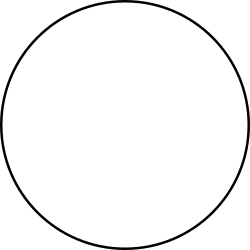
The Local Group is the galaxy group that includes the Milky Way, where Earth is located. It has a total diameter of roughly 3 megaparsecs (10 million light-years; 9×1019 kilometres), and a total mass of the order of 2×1012 solar masses (4×1042 kg). It consists of two collections of galaxies in a "dumbbell" shape; the Milky Way and its satellites form one lobe, and the Andromeda Galaxy and its satellites constitute the other. The two collections are separated by about 800 kiloparsecs (3×10^6 ly; 2×1019 km) and are moving toward one another with a velocity of 123 km/s. The group itself is a part of the larger Virgo Supercluster, which may be a part of the Laniakea Supercluster. The exact number of galaxies in the Local Group is unknown as some are occluded by the Milky Way; however, at least 80 members are known, most of which are dwarf galaxies.
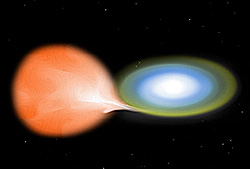
A nova is a transient astronomical event that causes the sudden appearance of a bright, apparently "new" star that slowly fades over weeks or months. All observed novae involve white dwarfs in close binary systems, but causes of the dramatic appearance of a nova vary, depending on the circumstances of the two progenitor stars. The main sub-classes of novae are classical novae, recurrent novae (RNe), and dwarf novae. They are all considered to be cataclysmic variable stars.

The Andromeda Galaxy is a barred spiral galaxy and is the nearest major galaxy to the Milky Way. It was originally named the Andromeda Nebula and is cataloged as Messier 31, M31, and NGC 224. Andromeda has a D25 isophotal diameter of about 46.56 kiloparsecs (152,000 light-years) and is approximately 765 kpc (2.5 million light-years) from Earth. The galaxy's name stems from the area of Earth's sky in which it appears, the constellation of Andromeda, which itself is named after the princess who was the wife of Perseus in Greek mythology.
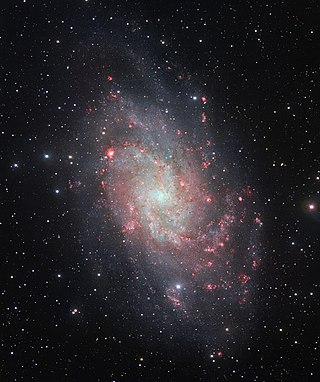
The Triangulum Galaxy is a spiral galaxy 2.73 million light-years (ly) from Earth in the constellation Triangulum. It is catalogued as Messier 33 or NGC 598. With the D25 isophotal diameter of 18.74 kiloparsecs (61,100 light-years), the Triangulum Galaxy is the third-largest member of the Local Group of galaxies, behind the Andromeda Galaxy and the Milky Way.

Indus is a constellation in the southern sky first professionally surveyed by Europeans in the 1590s and mapped on a globe by Petrus Plancius by early 1598. It was included on a plate illustrating southern constellations in Bayer's sky atlas Uranometria in 1603. It lies well south of the Tropic of Capricorn but its triangular shape can be seen for most of the year from the Equator. It is elongated from north to south and has a complex boundary. The English translation of its name is generally given as the Indian, though it is unclear which indigenous people the constellation was originally supposed to represent.

The Pinwheel Galaxy is a face-on, unbarred, and counterclockwise spiral galaxy located 21 million light-years from Earth in the constellation Ursa Major. It was discovered by Pierre Méchain in 1781 and was communicated that year to Charles Messier, who verified its position for inclusion in the Messier Catalogue as one of its final entries.

This is a list of lists, grouped by type of astronomical object.

NGC 300 (also known as Caldwell 70 or the Sculptor Pinwheel Galaxy) is a spiral galaxy in the constellation Sculptor. It was discovered on 5 August 1826 by Scottish astronomer James Dunlop. It is one of the closest galaxies to the Local Group, and it most likely lies between the latter and the Sculptor Group. It is the brightest of the five main spirals in the direction of the Sculptor Group. It is inclined at an angle of 42° when viewed from Earth and shares many characteristics of the Triangulum Galaxy. It is 94,000 light-years in diameter, somewhat smaller than the Milky Way, and has an estimated mass of (2.9 ± 0.2) × 1010M☉.

NGC 2403 is an intermediate spiral galaxy in the constellation Camelopardalis. It is an outlying member of the M81 Group, and is approximately 8 million light-years distant. It bears a similarity to M33, being about 50,000 light years in diameter and containing numerous star-forming H II regions. The northern spiral arm connects it to the star forming region NGC 2404. NGC 2403 can be observed using 10×50 binoculars. NGC 2404 is 940 light-years in diameter, making it one of the largest known H II regions. This H II region represents striking similarity with NGC 604 in M33, both in size and location in galaxy.

A luminous red nova is a stellar explosion thought to be caused by the merging of two stars. They are characterised by a distinct red colour, and a light curve that fades slowly with resurgent brightness in the infrared. Luminous red novae are not related to standard novae, which are explosions that occur on the surface of white dwarf stars.
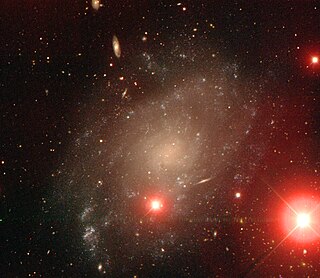
NGC 45 is a low surface brightness spiral galaxy in the equatorial constellation of Cetus. It was discovered on 11 November 1835 by the English astronomer John Herschel. The galaxy is located at a distance of 22 million light years and is receding with a heliocentric radial velocity of 466 km/s. It is located in the vicinity of the Sculptor Group, but is most likely a background galaxy.

V339 Delphini or Nova Delphini 2013 (PNV J20233073+2046041) is a bright nova star in the constellation Delphinus. It was discovered on 14 August 2013 by amateur astronomer Koichi Itagaki in Japan and confirmed by the Liverpool Telescope on La Palma. The nova appeared with a magnitude 6.8 when it was discovered and peaked at magnitude 4.3 on 16 August 2013. A nova is produced by the fusion of accumulated material on the white dwarf nova progenitor acquired from its companion star. The nova system is thus a binary star, and a classical nova. The white dwarf is a carbon-oxygen white dwarf, with an estimated mass of 1.04±0.02 M☉. There is not yet a consensus about what the binary's orbital period is; estimates range from 3.15 hours to 6.43 hours.

NGC 6984 is a barred spiral galaxy located 180 million light years away in the constellation Indus. It is a Type II Seyfert galaxy, a type of Active galactic nucleus (AGN). It is situated south of the celestial equator, and is visible with the help of a telescope having an aperture of 10 inches or more. It was discovered on 8 July 1834 by British astronomer John Herschel.

V1369 Centauri, also known as Nova Centauri 2013, was a bright nova in the constellation Centaurus that occurred in 2013. It was discovered on December 2, 2013 by amateur astronomer John Seach in Australia with a magnitude of 5.5. On December 14, 2013 it peaked at about magnitude 3.3, making it the brightest nova so far of this millennium.

V357 Muscae was a bright nova in the constellation Musca. It was discovered on January 14, 2018 by Rob Kaufman of Bright, Victoria, Australia with a magnitude of 7.0.
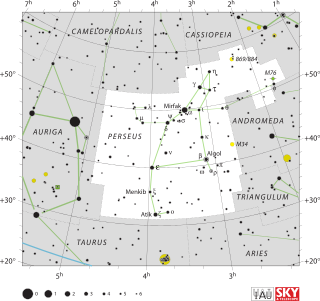
V392 Persei, also known as Nova Persei 2018, is a bright nova in the constellation Perseus discovered on April 29, 2018. It was previously known as a dwarf nova.

YZ Reticuli, also known as Nova Reticuli 2020 was a naked eye nova in the constellation Reticulum discovered on July 15, 2020. Previously it was known as a VY Sculptoris type object with the designation MGAB-V207.
